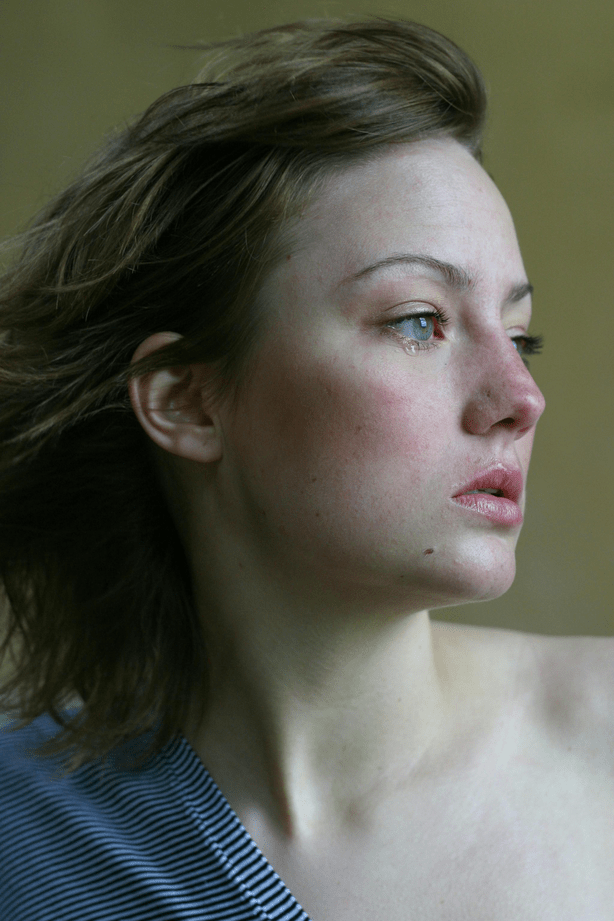Last updated on December 18th, 2024 at 03:18 am
- 1. Understanding Bipolar Disorder
- 1.1 Historical Context
- 1.2 Prevalence and Demographics
- 2. Types of Bipolar Disorder
- 2.1 Bipolar I Disorder
- 2.2 Bipolar II Disorder
- 2.3 Cyclothymic Disorder
- 2.4 Other Specified and Unspecified Bipolar Disorders
- 3. Symptoms and Manifestations
- 3.1 Manic Episodes
- 3.2 Hypomanic Episodes
- 3.3 Depressive Episodes
- 3.4 Mixed Episodes
- 4. Diagnosis and Assessment
- 4.1 Diagnostic Criteria
- 4.2 Differential Diagnosis
- 4.3 Assessment Tools
- 5. Etiology and Risk Factors
- 5.1 Genetic Factors
- 5.2 Environmental Factors
- 5.3 Neurobiological Factors
- 6. Treatment Approaches
- 6.1 Pharmacological Interventions
- 6.2 Psychosocial Therapies
- 6.3 Electroconvulsive Therapy (ECT)
- 6.4 Lifestyle Modifications
- 7. Challenges and Future Directions
- 7.1 Treatment Resistance
- 7.2 Cognitive Impairment
- 7.3 Comorbidity Management
- 7.4 Stigma Reduction
- 8. Challenges in the Management of Bipolar Disorder
- 8.1 Treatment Gaps and Diagnostic Challenges
- 8.2 Comorbidities and Impact on Treatment
- 9. Bipolar Disorder and Physical Health
- 9.1 Physical Exam and Medical History Considerations
- 9.2 Bipolar Disorder and Sleep Disturbances
- 10. Treatment-Resistant Depression in Bipolar Disorder
- 11. Bipolar Disorder in Different Populations
- 11.1 Bipolar Disorder in Adolescents
- 11.2 Bipolar Disorder in Older Adults
- 12. Nonpharmacological Treatments and Lifestyle Management
- 12.1 Lifestyle Changes for Bipolar Disorder Management
- 12.2 Impact on Relationships and Work Performance
- 13. Bipolar Disorder and Creativity
- 14. Bipolar Disorder Genetic Factors and Neurobiology
- 14.1 Neuroimaging and Brain Structure in Bipolar Disorder
- 15. Addressing Stigma and Improving Treatment Accessibility
- 15.1 Role of Mental Health Services Administration
- 16. Rapid Cycling Bipolar Disorder
- 16.1 Managing Rapid Cycling
- 17. Bipolar Disorder and the Risk of Suicide
- 17.1 Identifying Warning Signs
- 18. Cognitive Impairments in Bipolar Disorder
- 18.1 Strategies to Improve Cognitive Function
- 19. Hormonal Factors in Bipolar Disorder
- 19.1 Bipolar Disorder and Pregnancy
- 20. Bipolar Disorder and Comorbid Physical Conditions
- 20.1 Addressing Physical Health in Bipolar Disorder
- 21. Technological Tools for Managing Bipolar Disorder
- 21.1 Online Resources for Bipolar Disorder
- Conclusion
- Frequently Asked Questions
- What Are The Key Differences Between Bipolar I And Bipolar II Disorder?
- How Common Is Rapid Cycling In Bipolar Disorder?
- What Is The Role Of Family History In Bipolar Disorder?
- How Is Bipolar Disorder Diagnosed?
- What Are The Types Of Bipolar Disorder?
- What Are Common Symptoms Of Bipolar Disorder?
- What Treatment Options Are Available For Bipolar Disorder?
- Can Bipolar Disorder Lead To Severe Psychotic Symptoms?
- How Does Bipolar Disorder Affect Daily Life And Relationships?
- What Are Mixed Episodes In Bipolar Disorder?
- How Do Lifestyle Changes Aid In Managing Bipolar Disorder?
- How Is Bipolar Disorder Related To Creativity?
- What Role Does Cognitive Behavioral Therapy Play In Treating Bipolar Disorder?
- How Does Rapid Cycling Affect Treatment Outcomes In Bipolar Disorder?
- Are There Specific Risk Factors For Developing Bipolar Disorder?
- What Is The Connection Between Bipolar Disorder And Substance Abuse?
- How Does Bipolar Disorder Affect Sleep Patterns?
- What Are The Long-Term Outcomes For Individuals With Bipolar Disorder?
- Can Bipolar Disorder Be Managed Without Medication?
- How Can Psychodynamic Therapy Benefit Those With Bipolar Disorder?
Bipolar disorder is a complex mental health condition that affects millions of people worldwide. Characterized by extreme mood swings ranging from manic highs to depressive lows, this disorder can significantly impact an individual’s daily life, relationships, and overall well-being.
While the exact causes of bipolar disorder remain unclear, a combination of genetic, environmental, and neurochemical factors are believed to play a role in its development.
1. Understanding Bipolar Disorder
Bipolar disorder, formerly known as manic depression, is a chronic mental health condition that causes dramatic shifts in a person’s mood, energy levels, and ability to function. These mood episodes can last for days, weeks, or even months, and are often interspersed with periods of relative emotional stability.
1.1 Historical Context
The concept of bipolar disorder has evolved significantly over time. Ancient Greek physician Aretaeus of Cappadocia first described mania and melancholia as two distinct illnesses in the 1st century CE. It wasn’t until the late 19th century that German psychiatrist Emil Kraepelin unified these conditions under the term “manic-depressive insanity.” The modern understanding of bipolar disorder as a spectrum of related conditions began to take shape in the mid-20th century.
1.2 Prevalence and Demographics
Bipolar disorder affects approximately 2.8% of the adult population in the United States, with similar rates observed globally. The condition typically manifests in late adolescence or early adulthood, with the average age of onset being 25 years. However, cases have been reported in children as young as 6 and adults over 50. Bipolar disorder affects men and women equally, though women are more likely to experience rapid cycling and mixed episodes.
2. Types of Bipolar Disorder
The Diagnostic and Statistical Manual of Mental Disorders, Fifth Edition (DSM-5) recognizes several distinct types of bipolar disorder, each with its own set of diagnostic criteria and characteristics.
2.1 Bipolar I Disorder
Bipolar I disorder is characterized by the occurrence of at least one manic episode, which may be preceded or followed by hypomanic or major depressive episodes. Manic episodes in Bipolar I are severe enough to cause significant impairment in social or occupational functioning, often requiring hospitalization to prevent harm to oneself or others.
2.2 Bipolar II Disorder
Bipolar II disorder involves a pattern of depressive episodes and hypomanic episodes, but never a full manic episode. While the hypomanic episodes are less severe than full mania, the depressive episodes in Bipolar II can be just as debilitating as those in Bipolar I.
2.3 Cyclothymic Disorder
Cyclothymic disorder is characterized by numerous periods of hypomanic and depressive symptoms that do not meet the full criteria for hypomanic or major depressive episodes. These mood fluctuations must persist for at least two years in adults (one year in children and adolescents) for a diagnosis to be made.
2.4 Other Specified and Unspecified Bipolar Disorders
These categories include bipolar-like disorders that do not meet the full criteria for the aforementioned types. This may include conditions with symptoms that are consistent with bipolar disorder but do not meet the duration criteria, or cases where there is insufficient information to make a specific diagnosis.


3. Symptoms and Manifestations
The symptoms of bipolar disorder can vary widely between individuals and even within the same person over time. Understanding the key features of manic, hypomanic, and depressive episodes is crucial for accurate diagnosis and effective management.
3.1 Manic Episodes
Manic episodes are characterized by an abnormally elevated, expansive, or irritable mood, accompanied by increased energy or activity levels. Symptoms may include:
- Inflated self-esteem or grandiosity
- Decreased need for sleep
- Increased talkativeness or pressure to keep talking
- Flight of ideas or racing thoughts
- Distractibility
- Increased goal-directed activity or psychomotor agitation
- Excessive involvement in pleasurable activities with high potential for painful consequences
3.2 Hypomanic Episodes
Hypomanic episodes are similar to manic episodes but less severe. They do not cause significant impairment in social or occupational functioning and do not include psychotic features. Symptoms are similar to those of mania but may be less intense or shorter in duration.
3.3 Depressive Episodes
Depressive episodes in bipolar disorder are characterized by a persistent depressed mood and loss of interest or pleasure in activities. Other symptoms may include:
- Significant changes in appetite or weight
- Sleep disturbances (insomnia or hypersomnia)
- Psychomotor agitation or retardation
- Fatigue or loss of energy
- Feelings of worthlessness or excessive guilt
- Difficulty concentrating or making decisions
- Recurrent thoughts of death or suicide
3.4 Mixed Episodes
Mixed episodes occur when an individual experiences symptoms of both mania and depression simultaneously or in rapid succession. These episodes can be particularly challenging to manage and may increase the risk of suicidal ideation.
4. Diagnosis and Assessment
Diagnosing bipolar disorder can be challenging due to its complex nature and the potential overlap with other mental health conditions. A comprehensive evaluation is essential for accurate diagnosis and appropriate treatment planning.
4.1 Diagnostic Criteria
Diagnosis of bipolar disorder is based on the criteria outlined in the DSM-5. These criteria specify the number, duration, and severity of symptoms required for each type of bipolar disorder. A thorough clinical assessment, including a detailed history of mood episodes and their impact on functioning, is crucial.
4.2 Differential Diagnosis
Several conditions can mimic or coexist with bipolar disorder, making differential diagnosis essential. These may include:
- Major depressive disorder
- Anxiety disorders
- Attention-deficit/hyperactivity disorder (ADHD)
- Borderline personality disorder
- Substance use disorders
- Schizophrenia and other psychotic disorders
4.3 Assessment Tools
Various assessment tools and rating scales can aid in the diagnosis and monitoring of bipolar disorder. These include:
- Mood Disorder Questionnaire (MDQ)
- Bipolar Spectrum Diagnostic Scale (BSDS)
- Young Mania Rating Scale (YMRS)
- Montgomery-Åsberg Depression Rating Scale (MADRS)
- Hamilton Depression Rating Scale (HAM-D)


5. Etiology and Risk Factors
The exact causes of bipolar disorder remain unclear, but research suggests a complex interplay of genetic, environmental, and neurobiological factors.
5.1 Genetic Factors
Bipolar disorder has a strong genetic component, with heritability estimates ranging from 60% to 85%. First-degree relatives of individuals with bipolar disorder have a 5-10 times higher risk of developing the condition compared to the general population. However, no single gene has been identified as the cause, suggesting a polygenic inheritance pattern.
5.2 Environmental Factors
Environmental factors may interact with genetic predisposition to trigger or exacerbate bipolar disorder. These may include:
- Childhood trauma or abuse
- Significant life events or stressors
- Substance abuse
- Sleep disturbances
- Seasonal changes
5.3 Neurobiological Factors
Neuroimaging studies have revealed structural and functional brain abnormalities in individuals with bipolar disorder. These include alterations in the prefrontal cortex, amygdala, and hippocampus. Neurotransmitter imbalances, particularly in the serotonin, norepinephrine, and dopamine systems, are also thought to play a role in the disorder’s pathophysiology.
6. Treatment Approaches
The treatment of bipolar disorder typically involves a combination of pharmacological interventions and psychosocial therapies. The primary goals of treatment are to stabilize mood, prevent recurrence of episodes, and improve overall functioning and quality of life.
6.1 Pharmacological Interventions
Medication is a cornerstone of bipolar disorder treatment. Common pharmacological interventions include:
- Mood stabilizers (e.g., lithium, valproic acid, carbamazepine)
- Atypical antipsychotics (e.g., olanzapine, quetiapine, aripiprazole)
- Antidepressants (used cautiously due to the risk of triggering manic episodes)
- Antianxiety medications (for short-term use in managing anxiety symptoms)
6.2 Psychosocial Therapies
Various psychotherapeutic approaches have shown efficacy in managing bipolar disorder:
- Cognitive-behavioral therapy (CBT)
- Interpersonal and social rhythm therapy (IPSRT)
- Family-focused therapy
- Psychoeducation
- Mindfulness-based interventions
6.3 Electroconvulsive Therapy (ECT)
ECT may be considered for severe manic or depressive episodes that have not responded to other treatments, particularly in cases with psychotic features or high suicide risk.
6.4 Lifestyle Modifications
Adopting healthy lifestyle habits can play a crucial role in managing bipolar disorder:
- Maintaining a regular sleep schedule
- Engaging in regular exercise
- Practicing stress-reduction techniques
- Avoiding alcohol and illicit drugs
- Developing a strong support network


7. Challenges and Future Directions
Despite advances in our understanding and treatment of bipolar disorder, significant challenges remain. These include improving early detection and intervention, reducing the high rates of misdiagnosis, and developing more effective and tolerable treatments.
7.1 Treatment Resistance
A substantial proportion of individuals with bipolar disorder do not achieve full remission with current treatments. Research into novel pharmacological agents, such as ketamine for rapid-acting antidepressant effects, and personalized medicine approaches based on genetic and biomarker profiles, may hold promise for improving outcomes.
7.2 Cognitive Impairment
Cognitive deficits, particularly in attention, memory, and executive function, are increasingly recognized as a core feature of bipolar disorder. These impairments can persist even during euthymic periods and significantly impact functional recovery. Developing targeted interventions to address cognitive dysfunction is an important area of ongoing research.
7.3 Comorbidity Management
Bipolar disorder frequently co-occurs with other psychiatric and medical conditions, complicating treatment and worsening overall prognosis. Integrated care approaches that address both bipolar disorder and comorbid conditions simultaneously may lead to improved outcomes.
7.4 Stigma Reduction
Despite increased awareness, stigma surrounding bipolar disorder remains a significant barrier to seeking and adhering to treatment. Continued efforts to educate the public and combat misconceptions about mental illness are crucial for improving access to care and quality of life for individuals with bipolar disorder.
8. Challenges in the Management of Bipolar Disorder
The management of bipolar disorder remains complex due to multiple barriers, including treatment gaps and individual variability in response rates. Although there are well-established treatment options, the receipt of treatment remains inconsistent across different demographics and regions.
Many individuals with bipolar disorder face significant treatment gaps, either due to lack of access to mental health care or delays in seeking help. Addressing these gaps is essential for improving overall outcomes and quality of life.


8.1 Treatment Gaps and Diagnostic Challenges
One of the primary challenges in managing bipolar disorder is the prevalence of diagnostic error. This can lead to delayed or inappropriate treatment.
Conditions like major depression, borderline personality disorder, and attention-deficit/hyperactivity disorder often overlap with bipolar disorder symptoms. This overlap complicates the diagnostic process, resulting in challenges for accurate treatment.
According to a National Institute of Mental Health report, misdiagnosis is common. It contributes to significant delays in initiating effective medical care for individuals.
8.2 Comorbidities and Impact on Treatment
Bipolar disorder is frequently accompanied by comorbid conditions, such as anxiety disorders and substance abuse. These comorbidities can exacerbate bipolar symptoms.
The presence of comorbidities increases the risk of suicide and complicates the treatment process. Integrated treatment approaches are increasingly recommended by health professionals to improve outcomes.
9. Bipolar Disorder and Physical Health
Bipolar disorder not only affects mental health but also has significant implications for physical health. Individuals with bipolar disorder often experience chronic health issues such as cardiovascular disease and diabetes.
These physical health problems may be due to lifestyle factors or side effects of medications. The focus on physical health is therefore a crucial aspect of bipolar disorder management.
9.1 Physical Exam and Medical History Considerations
When diagnosing bipolar disorder, a health care provider will often conduct a thorough physical exam. They also assess the individual’s medical history.
This process is essential to rule out medical conditions that mimic bipolar disorder. Conditions like thyroid dysfunction or neurological disorders need to be excluded for accurate diagnosis.


9.2 Bipolar Disorder and Sleep Disturbances
Sleep disturbances in bipolar disorder are a common symptom that can significantly impact day life. Sleep problems, such as insomnia or hypersomnia, are frequently reported during both manic and depressive episodes.
These disturbances contribute to mood instability and can even trigger mood swings in bipolar disorder. Psychotherapy for bipolar disorder, including cognitive behavioral therapy, is often used to address these sleep disturbances.
10. Treatment-Resistant Depression in Bipolar Disorder
Treatment-resistant depression is a challenge in bipolar disorder, as not all individuals respond adequately to standard therapies. Emerging treatments, such as brain stimulation therapies, including transcranial magnetic stimulation, have shown promise in cases of treatment-resistant depression.
Electroconvulsive therapy (ECT) for bipolar disorder is also used in severe cases. This is particularly relevant when psychotic symptoms are present or when there is a high risk of suicide.
11. Bipolar Disorder in Different Populations
Bipolar disorder affects individuals across different age groups and life stages. The manifestations and challenges vary by population.
Bipolar disorder in children and adolescents can often be difficult to identify. This is due to overlapping symptoms with other mental disorders, such as ADHD.
11.1 Bipolar Disorder in Adolescents
The early signs of bipolar disorder may emerge during adolescence. This period is often marked by emotional volatility.
Episodes of depression or hypomanic symptoms may initially be misattributed to typical teenage behavior. Identification by a mental health professional can facilitate early intervention.
11.2 Bipolar Disorder in Older Adults
Bipolar disorder in older adults often presents differently compared to younger populations. Depressive episodes are more common than manic symptoms.
The management of bipolar disorder in this demographic must consider other age-related health issues. These include the risk of cardiovascular disease and the impact of medications on physical health.


12. Nonpharmacological Treatments and Lifestyle Management
In addition to pharmacological interventions, nonpharmacological treatments play a significant role. These include psychological therapies and lifestyle modifications.
Acceptance and commitment therapy for bipolar disorder is gaining recognition. Mindfulness-based interventions also show benefits in reducing symptoms of depression.
12.1 Lifestyle Changes for Bipolar Disorder Management
Lifestyle changes for bipolar disorder are crucial components of comprehensive care. These include maintaining a consistent sleep schedule and engaging in regular exercise.
Techniques such as yoga and mindfulness can be helpful in managing mood swings. Participation in bipolar disorder support groups can also provide emotional support.
12.2 Impact on Relationships and Work Performance
The impact of bipolar disorder on relationships and work performance is profound. Individuals may experience difficulty maintaining stable relationships due to mood swings.
Rapid cycling and impulsivity also affect work performance. Vocational rehabilitation for bipolar disorder can help individuals regain productivity.
13. Bipolar Disorder and Creativity
There is a long-standing association between bipolar disorder and creativity. Historical accounts and modern studies suggest individuals may possess enhanced creative abilities.
While creativity in bipolar disorder can be positive, it may coincide with poor judgment. This can lead to risk-taking behavior and adverse consequences during manic episodes.
14. Bipolar Disorder Genetic Factors and Neurobiology
Bipolar disorder is a highly heritable condition. Genetics play a significant role in its onset.
Genetic studies have highlighted the polygenic nature of bipolar disorder. Research in the American Journal of Medical Genetics suggests environmental triggers interact with genetic factors.
14.1 Neuroimaging and Brain Structure in Bipolar Disorder
Neuroimaging in bipolar disorder has provided insights into changes in brain structure. These changes particularly occur in areas such as the prefrontal cortex and the amygdala.
These brain imaging findings support the concept that bipolar disorder is, in part, a neurobiological condition. Understanding the neurobiology helps health professionals develop targeted interventions.
15. Addressing Stigma and Improving Treatment Accessibility
Stigma associated with bipolar disorder remains a significant obstacle to effective care. Many individuals hesitate to seek mental health treatment due to misconceptions about the condition.
Public education campaigns by organizations like the National Institute of Mental Health aim to reduce stigma. The World Health Organization also promotes understanding and improves treatment rates globally.
15.1 Role of Mental Health Services Administration
The Mental Health Services Administration in the United States has expanded access to mental health care. This is particularly for individuals with bipolar disorder.
Improving awareness and promoting timely intervention can enhance the receipt of treatment. National surveys, such as those by Kessler RC and Regier DA, offer insights into these challenges.


16. Rapid Cycling Bipolar Disorder
Rapid cycling bipolar disorder is characterized by experiencing four or more mood episodes within a 12-month period. This includes manic, hypomanic, or depressive episodes occurring in rapid succession.
Rapid cycling is associated with a more severe form of the disorder. It presents challenges in stabilizing mood swings and achieving long-term management.
16.1 Managing Rapid Cycling
Managing rapid cycling requires an individualized approach. This often involves mood stabilizers and psychotherapy for bipolar disorder.
Strategies like maintaining consistent sleep patterns and reducing stress are also crucial. A health care provider may adjust medications to address rapid cycling effectively.
17. Bipolar Disorder and the Risk of Suicide
The risk of suicide in bipolar disorder is significantly higher compared to the general population. Individuals experiencing severe symptoms, such as mixed episodes, are particularly vulnerable.
Health professionals emphasize the importance of timely intervention. Continuous monitoring is vital to reduce suicide risk and provide necessary support.
17.1 Identifying Warning Signs
Common symptoms like severe depression and hopelessness can indicate an elevated risk of suicide. Impulsivity may further increase this risk.
Family members and mental health professionals should remain vigilant. Immediate medical care can be life-saving during periods of high risk.
18. Cognitive Impairments in Bipolar Disorder
Cognitive impairments are common in individuals with bipolar disorder. These include difficulties with memory, attention, and executive functioning.
These impairments can affect day-to-day functioning and contribute to overall disability. Addressing cognitive symptoms is a crucial aspect of comprehensive bipolar disorder management.
18.1 Strategies to Improve Cognitive Function
Cognitive behavioral therapy for bipolar disorder can address cognitive deficits effectively. Brain stimulation therapies are also being explored.
Transcranial magnetic stimulation is a potential intervention for cognitive impairments. Lifestyle changes, including regular exercise, can also promote cognitive health.
19. Hormonal Factors in Bipolar Disorder
Hormones play a significant role in bipolar disorder, particularly in women. Hormonal fluctuations during pregnancy, the postpartum period, and menopause can trigger bipolar symptoms.
Understanding these hormonal influences helps tailor treatment plans. Personalized approaches are important to manage symptoms effectively in women with bipolar disorder.
19.1 Bipolar Disorder and Pregnancy
Pregnancy presents unique challenges for managing bipolar disorder. Some medications may pose risks to the developing fetus.
A health care provider may recommend nonpharmacological treatments to minimize risks. Close monitoring during pregnancy and the postpartum period is essential for mother and child.


20. Bipolar Disorder and Comorbid Physical Conditions
Individuals with bipolar disorder are more likely to have comorbid physical health conditions. These conditions include obesity, metabolic syndrome, and cardiovascular disease.
These physical conditions complicate the management of bipolar disorder and impact survival rates. Coordinated care is vital for improving outcomes in such cases.
20.1 Addressing Physical Health in Bipolar Disorder
Regular physical exams and ongoing monitoring of physical health are crucial for individuals with bipolar disorder. This helps to manage bipolar symptoms and associated physical health issues.
Lifestyle changes, such as improved diet and exercise, can enhance both mental and physical health. Health professionals work to optimize treatments to support a more productive life.
21. Technological Tools for Managing Bipolar Disorder
Technological tools are increasingly used to manage bipolar disorder. Mobile apps and online platforms can provide mood tracking and medication reminders.
These tools also offer psychoeducation for bipolar disorder. They can improve adherence to treatment and provide support between visits to health professionals.
21.1 Online Resources for Bipolar Disorder
Online resources for bipolar disorder play an important role in empowering individuals. These include educational websites and support communities.
These resources provide accessible information and peer support. They help individuals cope with bipolar disorder and make informed decisions about treatment.
Conclusion
Bipolar disorder is a complex and challenging mental health condition that requires a multifaceted approach to diagnosis, treatment, and management. As research continues to unravel the intricacies of this disorder, new insights and innovative treatment strategies offer hope for improved outcomes and quality of life for those affected by bipolar disorder.
From Embrace Inner Chaos to your inbox
Transform your Chaos into authentic personal growth – sign up for our free weekly newsletter! Stay informed on the latest research advancements covering:
Narcissistic Personality Disorder (NPD)
Frequently Asked Questions
What Are The Key Differences Between Bipolar I And Bipolar II Disorder?
Bipolar I and Bipolar II disorders are both types of bipolar spectrum disorders, yet they present distinct differences in their severity and symptom manifestations. Bipolar I disorder is characterized by manic episodes that are often severe and may necessitate hospitalization due to their impact on daily functioning and potential for psychotic features.
In contrast, Bipolar II disorder involves hypomanic episodes, which are less severe than manic episodes, and episodes of major depression. While hypomania may enhance productivity and mood without leading to extreme dysfunction, the depressive phases of Bipolar II are often more disabling. According to National Institute of Mental Health, understanding the difference is crucial for proper diagnosis and treatment, as each type demands a distinct therapeutic approach.
How Common Is Rapid Cycling In Bipolar Disorder?
Rapid cycling in bipolar disorder occurs when an individual experiences four or more mood episodes within a 12-month period. This phenomenon can significantly complicate treatment, as rapid cycling can involve both manic and depressive episodes, or even mixed features, where symptoms of mania and depression occur simultaneously.
Studies published by the American Journal of Psychiatry indicate that approximately 10-20% of those with bipolar disorder experience rapid cycling, which tends to be more common in individuals who have not responded adequately to treatment or who have comorbid conditions like anxiety. Identifying rapid cycling early in the diagnostic process is essential to avoid treatment-resistant depression and to tailor the therapeutic interventions effectively.


What Is The Role Of Family History In Bipolar Disorder?
Family history is a significant risk factor in the development of bipolar disorder, contributing to its genetic predisposition. Research suggests that individuals with a first-degree relative diagnosed with bipolar disorder have a substantially higher risk of developing the condition themselves.
The American Journal of Medical Genetics highlights that the genetic component can explain up to 60-80% of the variance in the risk of developing bipolar disorder. Understanding this genetic link is crucial in both the early detection and potential prevention of bipolar disorder, as families with a history of mental health conditions are encouraged to seek early psychiatric evaluation and support for at-risk members.
How Is Bipolar Disorder Diagnosed?
The diagnosis of bipolar disorder involves a comprehensive assessment conducted by a mental health professional, incorporating medical history, symptom analysis, and physical exams to rule out other conditions that may mimic bipolar symptoms. The National Institute on Mental Health emphasizes the importance of differentiating bipolar disorder from other mental health issues such as borderline personality disorder or major depression.
Diagnostic tools like the Structured Clinical Interview for DSM (SCID) are often employed, and bipolar disorder is typically diagnosed based on specific criteria outlined in the DSM-5, which includes examining mood swings, severity, and duration of manic or depressive episodes.
What Are The Types Of Bipolar Disorder?
Bipolar disorder is categorized into several types, including Bipolar I, Bipolar II, Cyclothymic Disorder, and other related conditions. Bipolar I disorder is marked by at least one full-blown manic episode, while Bipolar II disorder involves episodes of hypomania and major depression without full manic episodes.
Cyclothymic Disorder features numerous periods of hypomanic and depressive symptoms over a prolonged period but not meeting the full diagnostic criteria for a major depressive or manic episode. The World Health Organization reports that recognizing these distinctions helps tailor effective treatment plans and ensures the appropriate use of medications like mood stabilizers and antipsychotics.
What Are Common Symptoms Of Bipolar Disorder?
The symptoms of bipolar disorder can range from extreme mood swings—such as mania or hypomania—to episodes of severe depression. During manic episodes, individuals may exhibit increased activity levels, heightened energy, and reduced need for sleep, often leading to impulsive behavior or Poor judgment.
Depressive episodes, on the other hand, are characterized by symptoms such as fatigue, low energy, and a pervasive sense of hopelessness. According to the Mental Health Services Administration, understanding these symptoms can help in identifying the disorder early and promoting timely mental health care, which is essential to managing the condition effectively.
What Treatment Options Are Available For Bipolar Disorder?
Bipolar disorder is a lifelong condition, but various treatment options are available that can help manage the symptoms. Medications, such as mood stabilizers and antipsychotic medications, are the mainstay for treatment, often complemented by psychotherapy like cognitive behavioral therapy (CBT) and psychoeducation.
In some cases, Brain stimulation therapies such as Electroconvulsive Therapy (ECT) are also recommended, particularly for treatment-resistant cases. The National Institute of Mental Health underscores the importance of a holistic approach that includes lifestyle changes, regular sleep patterns, and consistent medical care to stabilize mood and enhance the quality of life.
Can Bipolar Disorder Lead To Severe Psychotic Symptoms?
Yes, bipolar disorder can lead to psychotic symptoms, particularly during severe manic or depressive episodes. These symptoms might include hallucinations or delusions, and they often reflect the mood state of the individual.
For instance, during a manic phase, delusions of grandeur may be present, whereas during a depressive episode, delusions of guilt or worthlessness might occur. According to Psychiatric Times, the presence of psychotic symptoms often necessitates the use of antipsychotic medications in conjunction with mood stabilizers, as these symptoms significantly impact the individual’s ability to lead a productive life.


How Does Bipolar Disorder Affect Daily Life And Relationships?
Bipolar disorder can have a profound impact on daily life and relationships, especially if left untreated or poorly managed. Mood swings may strain personal relationships, and impulsive decisions during manic episodes can lead to financial or legal troubles.
Additionally, the depressive phases can make it challenging for individuals to maintain social connections, often leading to isolation. The World Health Organization suggests that family involvement in therapy and psychoeducation is crucial for providing support and reducing the stigma associated with the disorder, thereby enhancing relationship stability and overall quality of life.
What Are Mixed Episodes In Bipolar Disorder?
Mixed episodes in bipolar disorder occur when symptoms of both mania and depression are experienced simultaneously, leading to an increased risk of suicide and a complicated treatment process. Individuals may feel agitated or energized while also experiencing profound sadness or hopelessness, creating significant distress.
The American Journal of Psychiatry notes that these mixed features can make the disorder harder to manage, often requiring a combination of mood stabilizers and antipsychotic medications for effective treatment. Early identification of mixed episodes is essential to prevent the worsening of symptoms and improve treatment outcomes.
How Do Lifestyle Changes Aid In Managing Bipolar Disorder?
Lifestyle changes play a significant role in managing bipolar disorder effectively. Regular physical activity, maintaining a stable sleep schedule, and reducing stress through techniques like mindfulness and yoga are often recommended to complement medical treatments.
The World Health Organization highlights that consistent routines can help stabilize mood fluctuations and improve response rates to other treatments, including medication and psychotherapy. Adopting these lifestyle measures is particularly helpful in reducing the frequency of both manic and depressive episodes.
How Is Bipolar Disorder Related To Creativity?
Bipolar disorder is often linked to enhanced creativity, particularly during hypomanic phases, where individuals experience increased energy, productivity, and expansive thinking. Many well-known creative individuals have been diagnosed with bipolar disorder, leading to speculation about the connection between mood elevation and creative achievement.
The American Journal of Psychiatry points out that while hypomania may enhance creative output, it can also lead to impaired judgment and difficulties in sustaining productive efforts. Proper management of symptoms is necessary to harness the potential positive aspects without the negative consequences of the disorder.
What Role Does Cognitive Behavioral Therapy Play In Treating Bipolar Disorder?
Cognitive Behavioral Therapy (CBT) is an effective form of psychotherapy used in treating bipolar disorder, particularly in addressing depressive symptoms and helping individuals develop coping strategies. CBT focuses on challenging negative thought patterns and promoting healthier behavior, thus mitigating the risk of relapse.
According to the National Institute on Mental Health, CBT is often used in combination with medication and has been shown to improve functioning and quality of life in individuals with bipolar disorder. This approach helps patients manage stress and adhere to treatment protocols more consistently.
How Does Rapid Cycling Affect Treatment Outcomes In Bipolar Disorder?
Rapid cycling can complicate the treatment of bipolar disorder due to the frequent shifts between mood states, which make it challenging to stabilize the patient’s condition. Individuals with rapid cycling are often less responsive to conventional treatments, such as mood stabilizers, and may require more intensive interventions.
The American Journal of Psychiatry explains that rapid cycling is often associated with a poorer prognosis and increased risk for treatment-resistant depression. Early identification and a tailored treatment approach that may include both pharmacological and psychosocial interventions are essential to improve outcomes for these individuals.
Are There Specific Risk Factors For Developing Bipolar Disorder?
Several risk factors contribute to the likelihood of developing bipolar disorder, including genetic predisposition, environmental stressors, and biological factors such as brain structure abnormalities. A family history of mood disorders is a significant indicator, increasing an individual’s risk.
Additionally, traumatic life events, such as childhood trauma or significant stress, can trigger the onset of symptoms in genetically predisposed individuals. According to the World Health Organization, identifying and managing these risk factors through early intervention and support can help mitigate the severity of bipolar episodes and improve overall prognosis.


What Is The Connection Between Bipolar Disorder And Substance Abuse?
There is a significant association between bipolar disorder and substance abuse, with many individuals turning to alcohol or drugs as a means to self-medicate during manic or depressive episodes. This comorbidity exacerbates the symptoms of bipolar disorder and complicates the treatment process.
Studies from the National Institute on Drug Abuse reveal that individuals with bipolar disorder are at an increased risk for substance use disorders, which can lead to more severe symptoms, increased frequency of hospitalizations, and a higher risk of suicide. Integrated treatment that addresses both bipolar disorder and substance abuse is crucial for effective management.
How Does Bipolar Disorder Affect Sleep Patterns?
Bipolar disorder significantly affects sleep patterns, with individuals often experiencing insomnia during manic phases or hypersomnia during depressive episodes. Sleep disturbances can trigger or exacerbate mood episodes, creating a vicious cycle that makes the disorder harder to manage.
According to the National Sleep Foundation, maintaining regular sleep hygiene is a key part of managing bipolar disorder, as stabilizing sleep patterns can help reduce the frequency and severity of mood swings. Sleep disturbances are often a precursor to mood episodes, so addressing these issues early is crucial for effective management.
What Are The Long-Term Outcomes For Individuals With Bipolar Disorder?
The long-term outcomes for individuals with bipolar disorder depend on various factors, including adherence to treatment, support systems, and the presence of comorbid conditions. With proper treatment, including medication and psychotherapy, many individuals with bipolar disorder can lead stable and productive lives.
However, treatment gaps and poor access to mental health care can negatively impact outcomes. According to World Health Organization, early diagnosis and consistent treatment are critical in reducing the risk of severe episodes, improving overall functioning, and enhancing the quality of life.
Can Bipolar Disorder Be Managed Without Medication?
While medication is the primary treatment for bipolar disorder, some individuals may seek non-pharmacological approaches, especially when medication leads to undesirable side effects. Management without medication typically includes psychotherapy, lifestyle modifications, and holistic health approaches such as mindfulness, yoga, and dietary changes.
According to the National Institute on Mental Health, while non-pharmacological treatments can be beneficial in managing symptoms, they are usually not sufficient alone for most individuals. A combined approach that includes both medication and therapy is typically most effective in managing bipolar symptoms.
How Can Psychodynamic Therapy Benefit Those With Bipolar Disorder?
Psychodynamic therapy is a form of talk therapy that focuses on exploring past experiences and unconscious processes to help individuals understand their emotions and behaviors better. For those with bipolar disorder, psychodynamic therapy can help in identifying emotional triggers and understanding patterns that lead to mood episodes.
According to Psychiatric Times, while psychodynamic therapy may not be a standalone treatment, it can complement other therapeutic approaches and help patients develop insight into their condition, thereby enhancing the effectiveness of other treatments such as medication and CBT.




